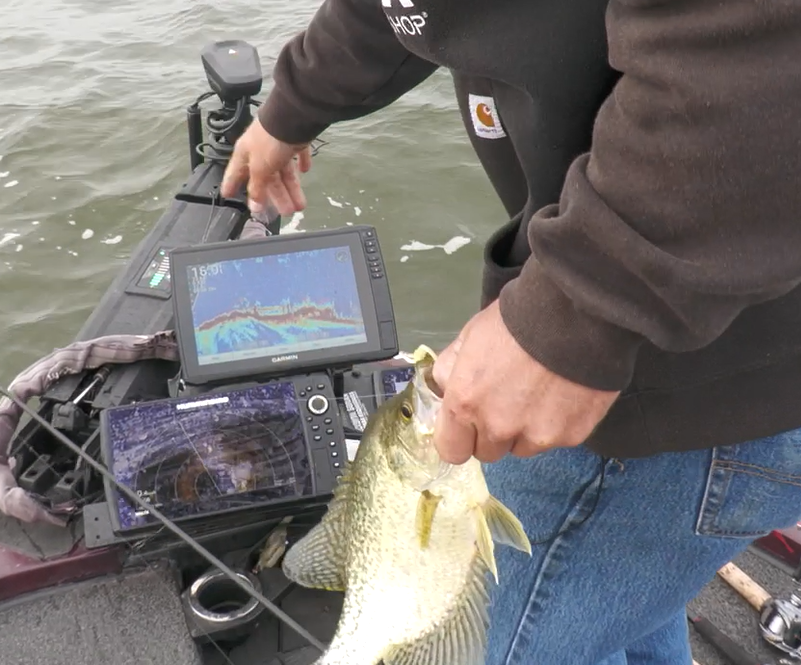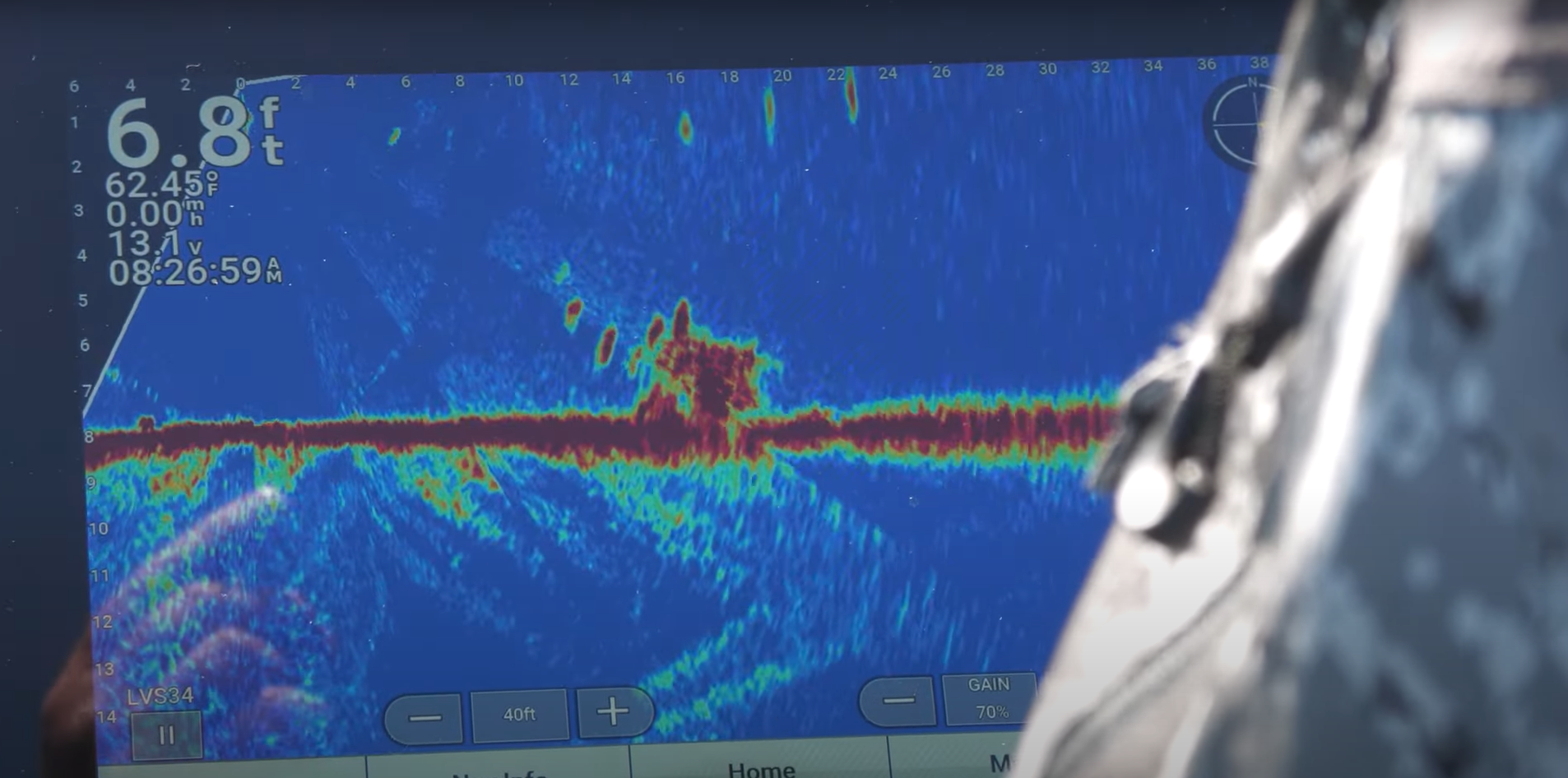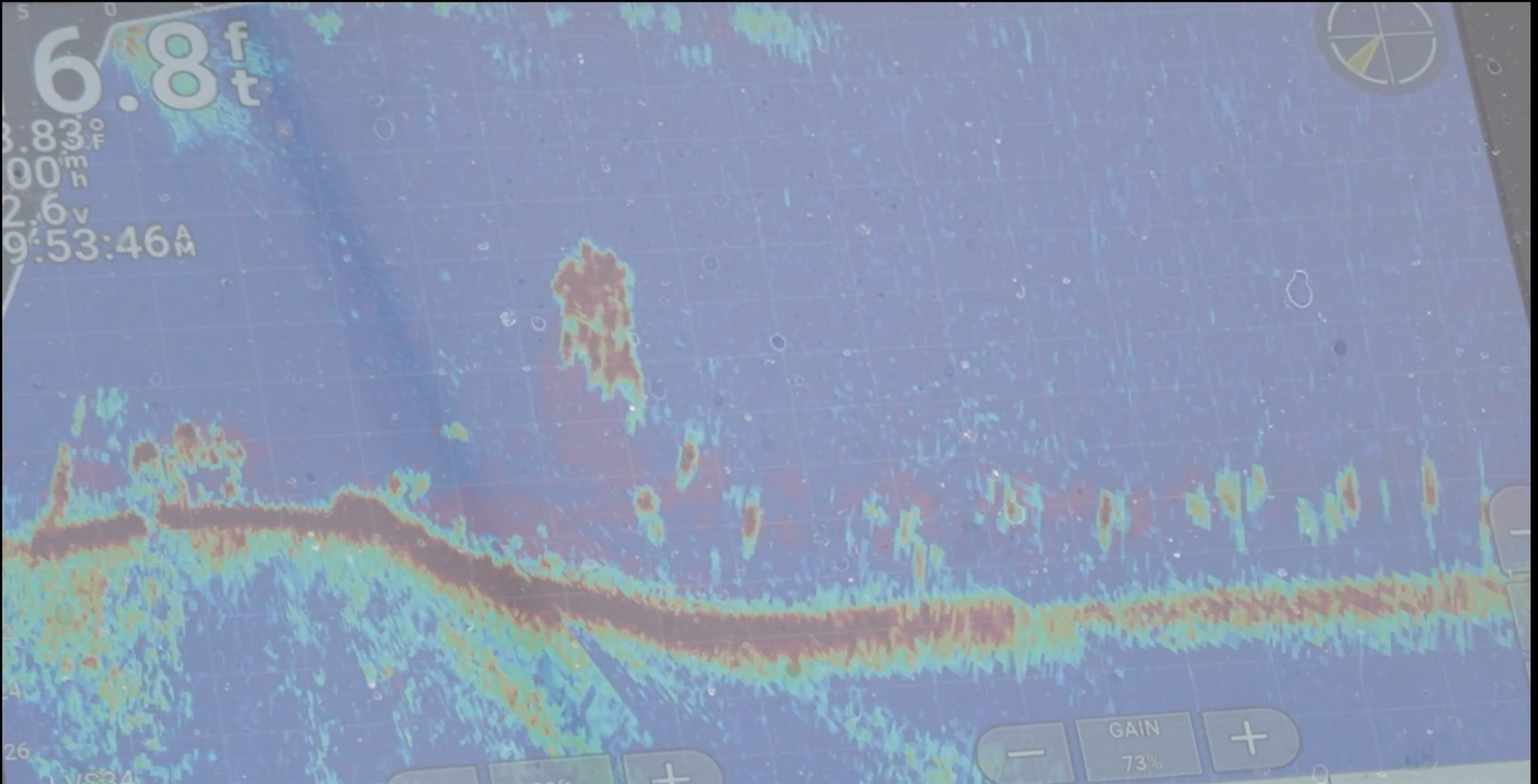Crappie Fishing with Livescope - Techniques, Tips, and Tackle For Success
The New Era Of Crappie Fishing

Pro staffer Jon Dietz points out how he just caught this quality crappie using his Livescope
Livescope And Other Forward Facing Sonars

The crappies in the photo above are the four large blobs. The block is a man-made crib and the green speck above the fish is a Bobby Garland Jig
Fish More Efficient And Precise Than Ever Before
Keep Your Distance
BnM Fishing Livescope Crappie Rods
- BnM Fishing Tree Thumper
- Available in 10' and 11' ML models
- Not the longest in the lineup, but very lightweight and sensitive
- Contoured handle and bottom reel seat
- BnM Fishing Diamond Jig Pole Spinning Rod
- Available in 8' - 14' ML models
- High modulus graphite for a stiffer backbone while still maintaining tip sensitivity
- 100% carbon fiber handle
- BnM Black Diamond Jig Pole Spinning Rod
- Available in a 16' Medium power model
- Greater lengths coming soon
- Aims to set the standard for Livescope crappie fishing
- 30 Ton graphite blank for stiff backbone and durability
- Stainless steel guides
- Genuine Portuguese cork
- Carbon fiber reel seat
- BnM Fishing Pro Staff Trolling Rod
- Available in 8' - 20' models
- Although designed to be a "trolling rod", its great length can be used to vertically fish structure from a great distance away
ACC Crappie Stix Livescope Crappie Rods
- ACC Crappie Stix Green Series Rods
- Available in a massive variety of lengths and actions
- From 5' - 16'
- Technique specific for dock-shooting, vertical jigging, trolling or Livescoping
- 11' - 16' models are the most Livescope appropriate
- Rear seat supplies the perfect balance on long rods
- Great sensitivity
- Strong backbone to swing slabs into the boat
- Available in a massive variety of lengths and actions
Jenko Fishing Livescope Crappie Rods
- Jenko Big T X-Series Livescope Crappie Jigging Rod
- Available in 10' - 15' models
- This rod puts advanced technology in the hands of crappie fishermen
- Shaves the weight of this rod in every conceivable manner
- 15fter weighs just 9.7oz
- Integrated weight balance system allows user to swap in and out 1/3oz weights on the butt of the rod to help balance with different presentations
Lew's Livescope Crappie Rods
- Lew's Wally Marshall Pro Target Spinning Rod
- Available in 6'6" - 16' models
- Premium IM8 Graphite blank, durable and sensitive
- Stainless steel guides to increase durability and reduce line friction
- Winn Dri-Tac grips
- No tangle tips
Stay Above The Fish
Gus' Complete Slip Bobber Setup
Experiment Often And With Confidence
Find Roamers

That large blob you see suspended in the water column is a school of crappies. They may be near structure, but are certainly not directly above it

